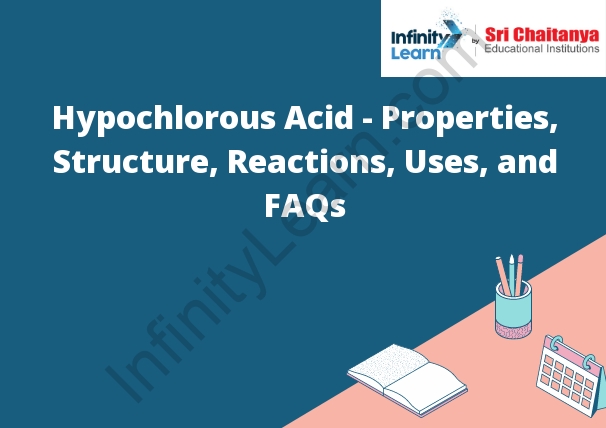Table of Contents
What is Hypochlorous Acid?
Hypochlorous acid is a weak acid that is formed when chlorine gas is dissolved in water. It is a pale greenish-yellow liquid that has a chlorine-like odor.
Hypochlorous acid is a strong disinfectant and is used to kill bacteria and other organisms. It is also used to bleach clothes and to disinfect swimming pools and other recreational water venues.

Hypochlorous Acid Structure – HOCl
Hypochlorous acid is a weak acid with a molecular formula of HOCl. It is a colorless, corrosive liquid that is soluble in water. The structure of hypochlorous acid consists of a hydrogen atom bonded to an oxygen atom with a chlorine atom attached to the oxygen atom. The chlorine atom is what makes hypochlorous acid a weak acid.
Reactions of Grignard reagents
A Grignard reagent is a magnesium halide that reacts with an alcohol to form an alkoxide. The Grignard reagent is formed by adding magnesium metal to a halide, such as bromide, iodide, or chloride. The magnesium halide dissolves in the alcohol to form a Grignard reagent. The Grignard reagent then reacts with the alcohol to form an alkoxide. The Grignard reagent is also a strong base, so it will also react with any protons present in the alcohol to form the corresponding alkoxide.
Reaction with the Protein Amino Groups
The amine groups on the protein react with the aldehyde groups on the sugar to form a Schiff base. This forms a covalent bond between the two molecules. The Schiff base then undergoes a process called Amadori rearrangement, in which the nitrogen and carbon atoms on the Schiff base swap places. This forms an imine molecule. The imine molecule then breaks down to form an aldehyde and a ketone. The aldehyde and ketone then react with each other to form an alcohol.
Reaction with the Lipids
The reaction of the lipids with the detergent creates micelles. Micelles are small, spherical objects that created when the detergent binds to the lipids. The detergent is in the core of the micelle, and the lipids are on the outside. The micelles are important because they help to solubilize the lipids. This means that the detergent breaks up the lipids and puts them into solution.
Hypochlorites
Hypochlorites are a family of chlorine-based bleaching agents. Sodium hypochlorite (NaClO) the most common, and usually sold as household bleach. It is a weak base that used to remove organic stains and disinfect surfaces. Chlorine dioxide (ClO2) is a more powerful hypochlorite that used as a disinfectant and a bleaching agent in water treatment and pulp and paper processing.
Production of Hypochlorites using Electrolysis
The electrolysis of NaCl in water produces chlorine gas and sodium hydroxide. Chlorine gas is a very strong oxidizing agent and used for disinfection and water purification. Sodium hydroxide is a strong base and used in many industrial processes.
Formation of Hypochlorous Acid
Hypochlorous acid a weak acid that formed when chlorine dissolves in water. It is a clear, colorless liquid that smells like bleach.
HOCl → H+ + OCl-
Uses of Hypochlorous Acid
Hypochlorous acid used in a variety of industries and applications. Some of these include:
- Bleaching
- Water treatment
- Disinfection
- Swimming pool and spa treatments
- Food processing
- Textile processing
- Pulp and paper production









